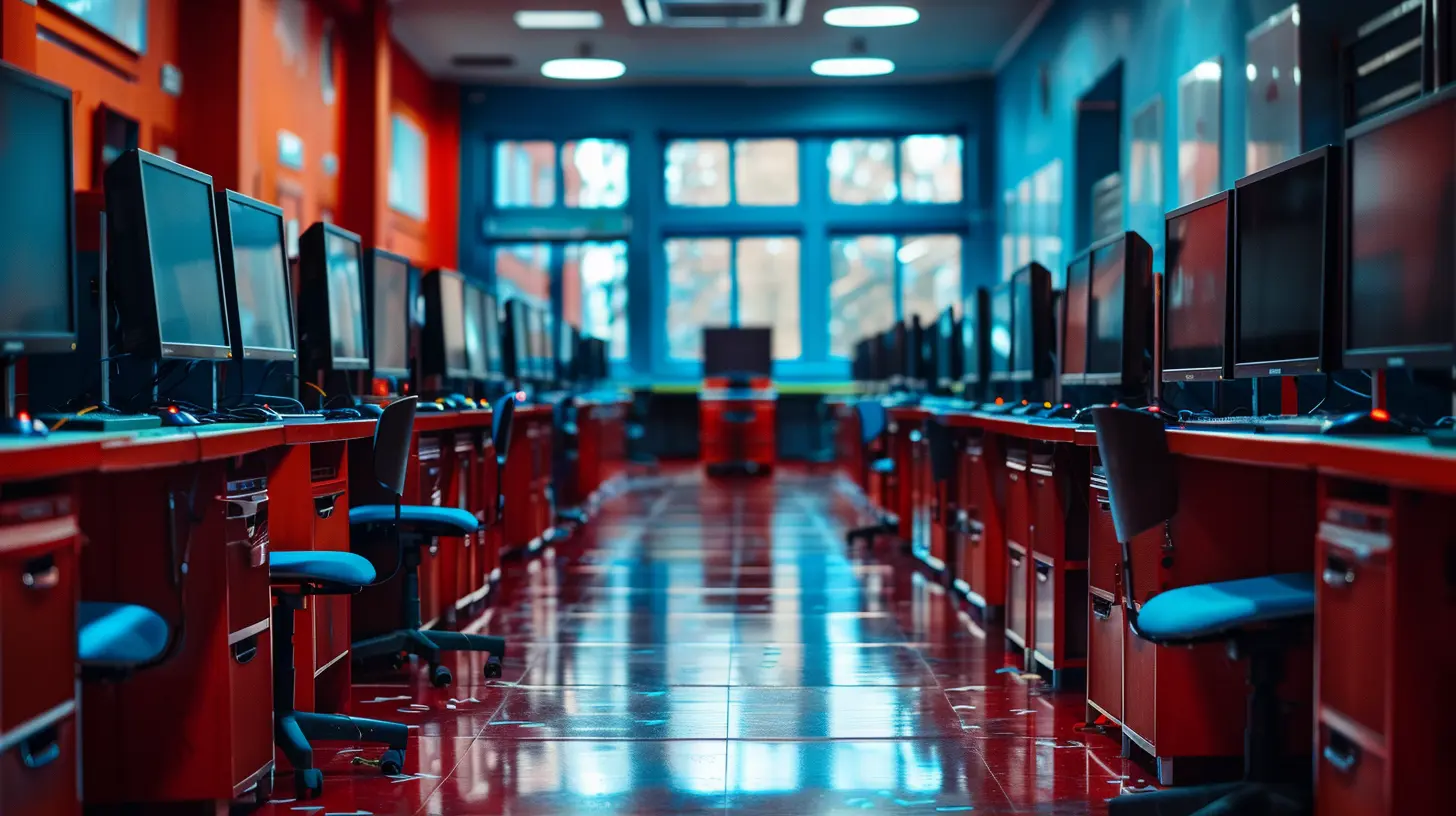Strategies to Keep Students Focused in Virtual Learning Environments
19 May 2025
Virtual learning has become the new norm for many students. While it offers flexibility, it also presents challenges—chief among them is maintaining focus. With distractions lurking around every corner, from social media to household noise, students often struggle to stay engaged.
So, how do we tackle this issue? In this article, we’ll uncover practical strategies that help students stay attentive, participate actively, and make the most of their virtual learning experience.

1. Create a Dedicated Learning Space
One of the simplest yet most effective ways to improve focus is by setting up a dedicated learning space. A consistent environment signals to the brain: it’s time to study now.What Makes a Good Study Space?
- Quiet and Distraction-Free – Avoid high-traffic areas where interruptions are frequent.- Comfortable but Not Too Cozy – A firm chair and desk work better than studying on the bed, which may lead to drowsiness.
- Well-Lit and Organized – Good lighting reduces eye strain, while an organized space minimizes distractions.
Encouraging students to personalize their study area with motivational quotes or simple decorations can also enhance their learning experience.

2. Set Clear Goals and Daily Schedules
Without structure, virtual learning can feel overwhelming. That’s why setting clear goals and daily schedules is essential.How to Create an Effective Study Schedule?
- Start with a to-do list outlining tasks for the day.- Break larger assignments into smaller, manageable chunks to prevent burnout.
- Use the Pomodoro Technique—25 minutes of focused work followed by a 5-minute break—to maintain productivity.
- Set specific study hours and stick to them as if attending in-person classes.
When students know exactly what they need to accomplish, they’re less likely to procrastinate or lose focus.

3. Reduce Digital Distractions
Let’s be honest—social media, YouTube, and online games are constant temptations. Digital distractions are one of the biggest hurdles in virtual learning.Ways to Limit Distractions
- Use website blockers like Cold Turkey or Freedom to prevent access to distracting sites during study hours.- Turn off non-essential notifications on phones and computers.
- Keep the phone out of reach or in another room when possible.
- Use full-screen mode while attending online classes to minimize multitasking.
By taking control of digital distractions, students can sharpen their concentration and absorb information more effectively.

4. Use Interactive and Engaging Learning Techniques
Traditional lectures can make virtual learning dull. To keep students engaged, educators and students alike should adopt interactive learning methods.Ideas to Make Learning More Engaging
- Active participation – Encourage students to ask questions and engage in discussions.- Gamification – Platforms like Kahoot! or Quizizz transform learning into a fun and competitive game.
- Educational videos and infographics – Visual content helps break monotony and reinforces key concepts.
- Breakout rooms – Small group discussions make learning more collaborative and interactive.
When learning is engaging, students are naturally more inclined to focus.
5. Encourage Regular Breaks and Physical Activity
Sitting in front of a screen for hours isn’t just mentally exhausting—it’s physically draining too. That’s why students need regular breaks and movement to stay energized.Best Break Practices
- Follow the 20-20-20 Rule – Every 20 minutes, look at something 20 feet away for 20 seconds to reduce eye strain.- Stretch or walk around – A short walk or simple stretching exercises can re-energize the body.
- Practice mindfulness – Deep breathing or a quick meditation session can help reset focus.
Breaks aren't time wasted—they're essential for maintaining productivity and preventing burnout.
6. Foster a Growth Mindset
Distractions and lack of motivation are often tied to mindset. Encouraging students to develop a growth mindset can make a huge difference in their focus and persistence.How to Build a Growth Mindset?
- Remind students that struggles and mistakes are part of learning, not failures.- Encourage self-reflection—What worked well? What needs improvement?
- Instill the habit of setting personal challenges to keep learning exciting.
When students believe in their ability to improve, they’re more likely to stay engaged and committed.
7. Improve Time Management Skills
Poor time management often leads to cramming, stress, and lack of focus. Students who know how to manage their time efficiently are more productive and less overwhelmed.Time Management Techniques
- Prioritize tasks using the Eisenhower Matrix (urgent vs. important).- Use digital planners like Google Calendar or Notion to stay organized.
- Establish a start-and-end routine to create a sense of normalcy similar to in-person learning.
Good time management helps students stay on track without feeling overloaded.
8. Promote Social Interaction and Support
Virtual learning can sometimes feel isolating. Without regular social interactions, students might lose motivation. Creating opportunities for peer collaboration and social engagement can keep them connected and motivated.Ways to Stay Social While Learning Online
- Study groups via Zoom or Discord – Sharing ideas with peers makes learning more dynamic.- Online forums or discussion boards – These allow students to ask questions and engage in meaningful discussions.
- Regular check-ins with teachers – One-on-one sessions can provide academic and emotional support.
A strong support system helps students stay focused and feel more connected to their learning journey.
9. Leverage Technology to Enhance Focus
Technology isn’t just a distraction—it can also be used strategically to boost concentration and productivity.Best Tools for Virtual Learning
- Note-taking apps like Notion or OneNote to keep track of lessons.- Task manager apps like Trello or Todoist for organizing assignments.
- Focus apps like Forest, which encourages staying off the phone.
- Screen recording tools to revisit challenging lessons at a later time.
Using the right tech tools can make virtual learning more structured and engaging.
10. Establish a Routine for Sleep and Nutrition
Many students overlook the impact of sleep and nutrition on focus. A well-rested and well-nourished brain is far more capable of staying attentive.Healthy Habits for Better Focus
- Maintain a consistent sleep schedule – 7-9 hours of quality sleep is crucial.- Eat brain-boosting foods – Nuts, fruits, fish, and leafy greens enhance cognitive function.
- Stay hydrated – Dehydration can cause fatigue and reduce concentration levels.
A healthy body and mind create the foundation for better learning and focus.
Final Thoughts
Keeping students focused in a virtual learning environment isn't easy, but it's definitely achievable with the right strategies. By creating a structured routine, minimizing distractions, engaging with interactive methods, and maintaining healthy habits, students can stay on top of their studies without feeling overwhelmed.Education is evolving, and with these focus-boosting techniques, students can thrive in the digital classroom just as effectively as in a physical one.
all images in this post were generated using AI tools
Category:
Virtual ClassroomsAuthor:

Olivia Chapman
Discussion
rate this article
4 comments
Ziva Meyers
Great insights! Balancing engagement and structure is key to enhancing focus in virtual learning environments.
June 23, 2025 at 11:44 AM

Olivia Chapman
Thank you! Striking that balance is indeed crucial for effective virtual learning. I'm glad you found the insights valuable!
Jenna Horne
Great tips! Keeping students engaged in virtual learning can feel like herding cats, but with a sprinkle of creativity and a dash of fun, we can make online classes a breeze. Let’s turn those screens into a canvas for learning success!
May 24, 2025 at 4:11 AM

Olivia Chapman
Thank you! Absolutely, creativity and fun are key to transforming virtual classrooms into engaging learning experiences. Let's keep inspiring our students!
Thalor Hodge
Engagement strategies must adapt to diverse student needs.
May 20, 2025 at 1:55 PM

Olivia Chapman
Absolutely! Tailoring engagement strategies to meet diverse student needs is essential for fostering inclusivity and enhancing focus in virtual learning environments.
Patrick Hamilton
In virtual realms where minds may drift, anchor engagement with creativity's gentle lift.
May 19, 2025 at 12:50 PM

Olivia Chapman
Thank you for your poetic insight! Creativity truly is a powerful tool for enhancing engagement in virtual learning.



